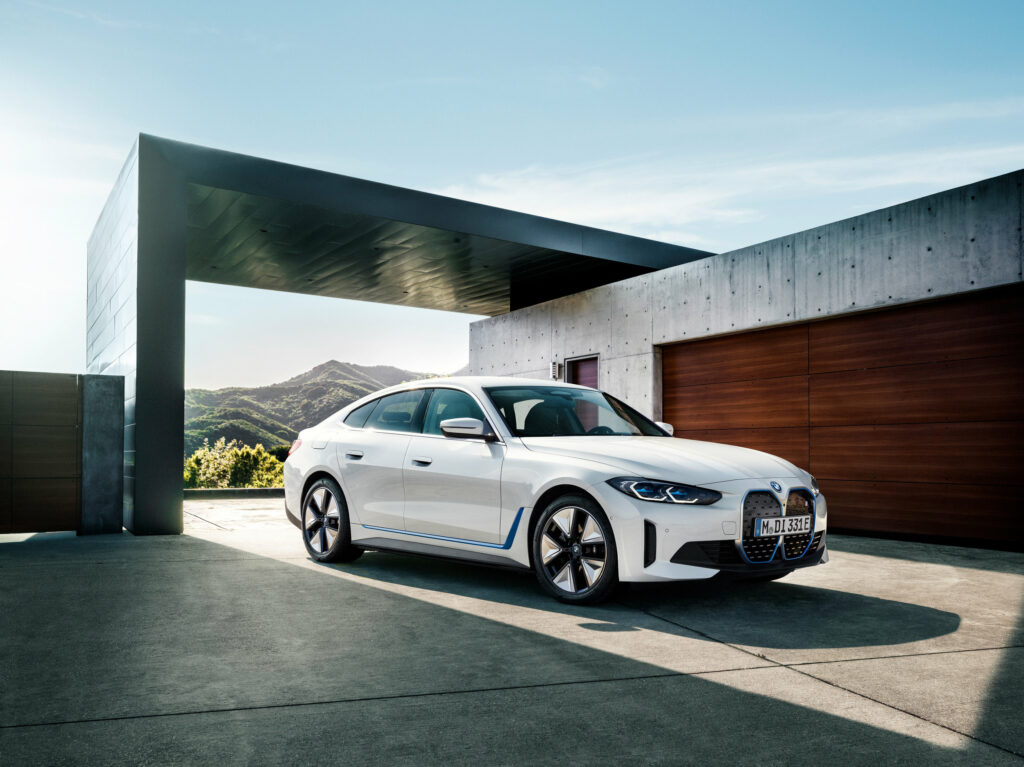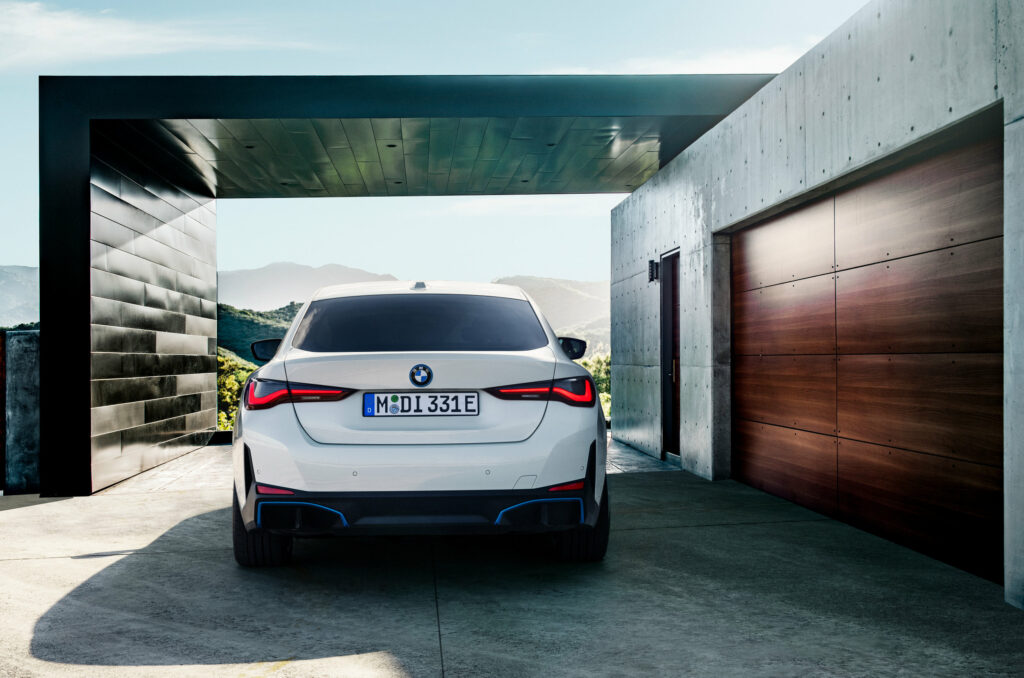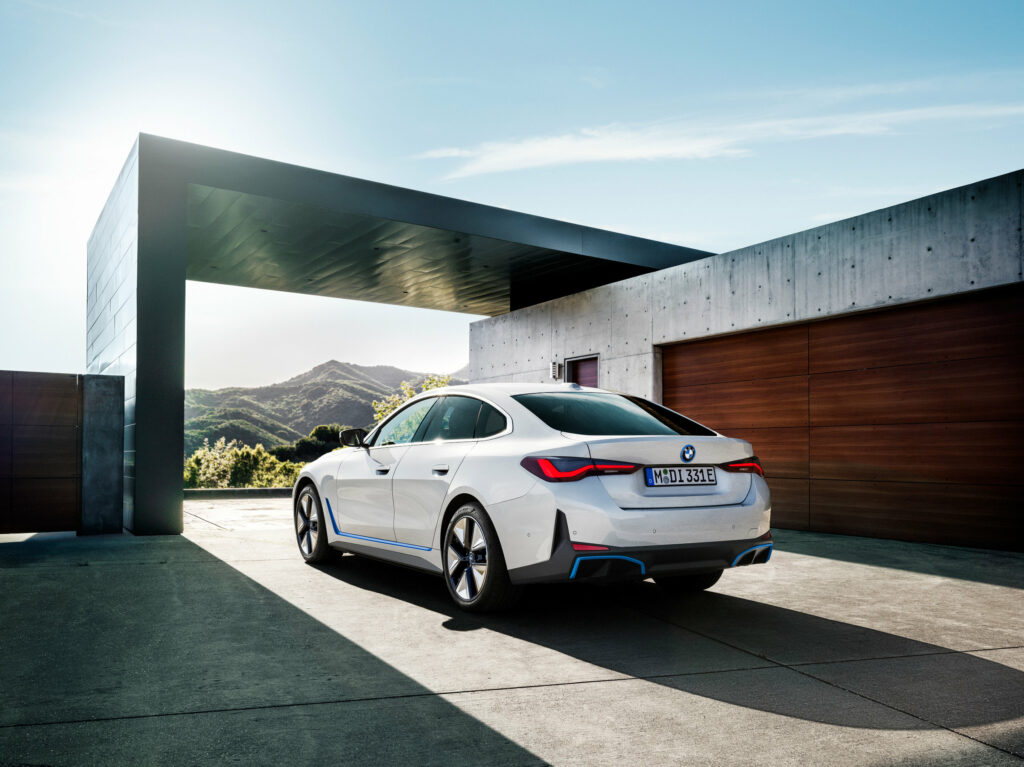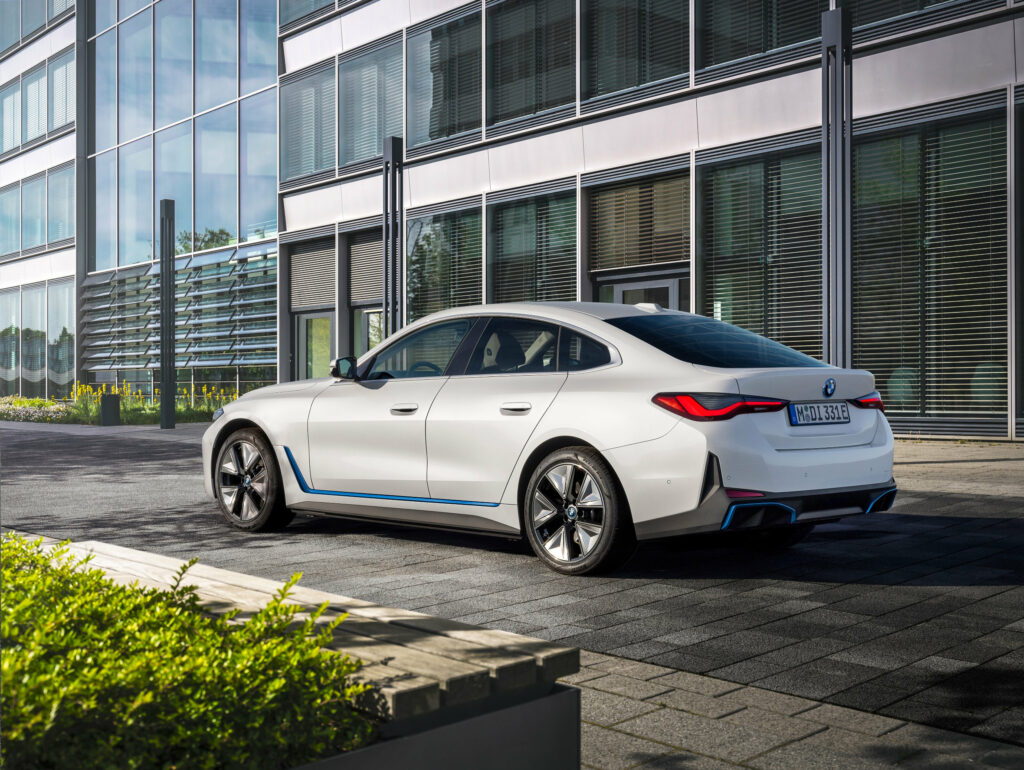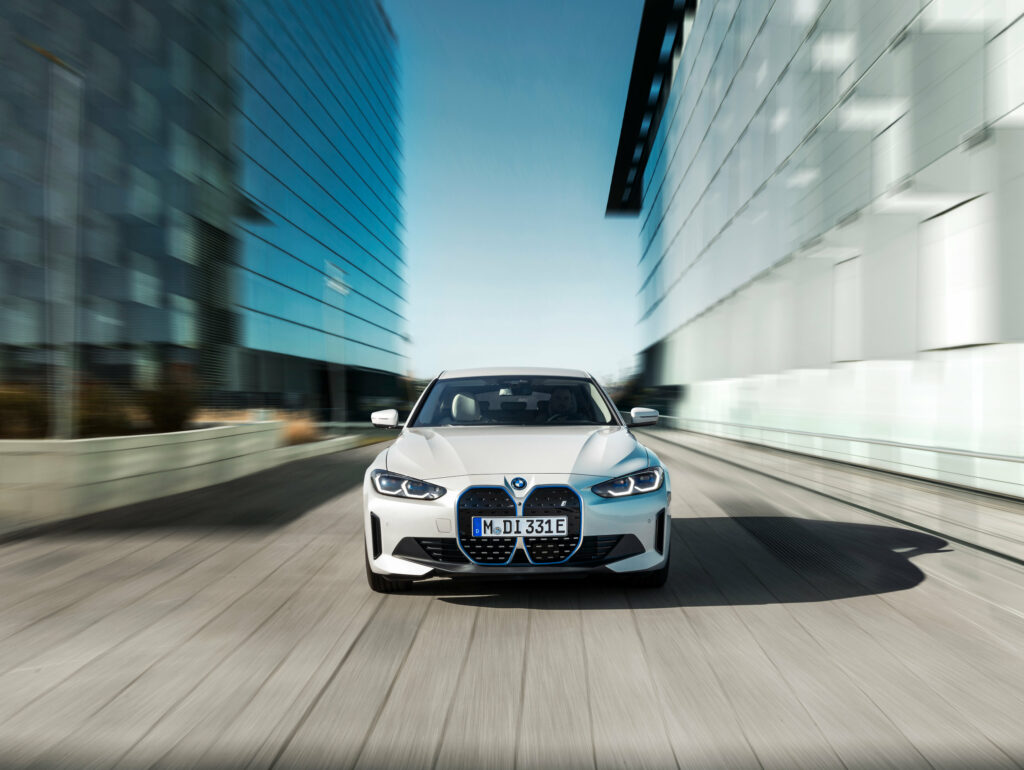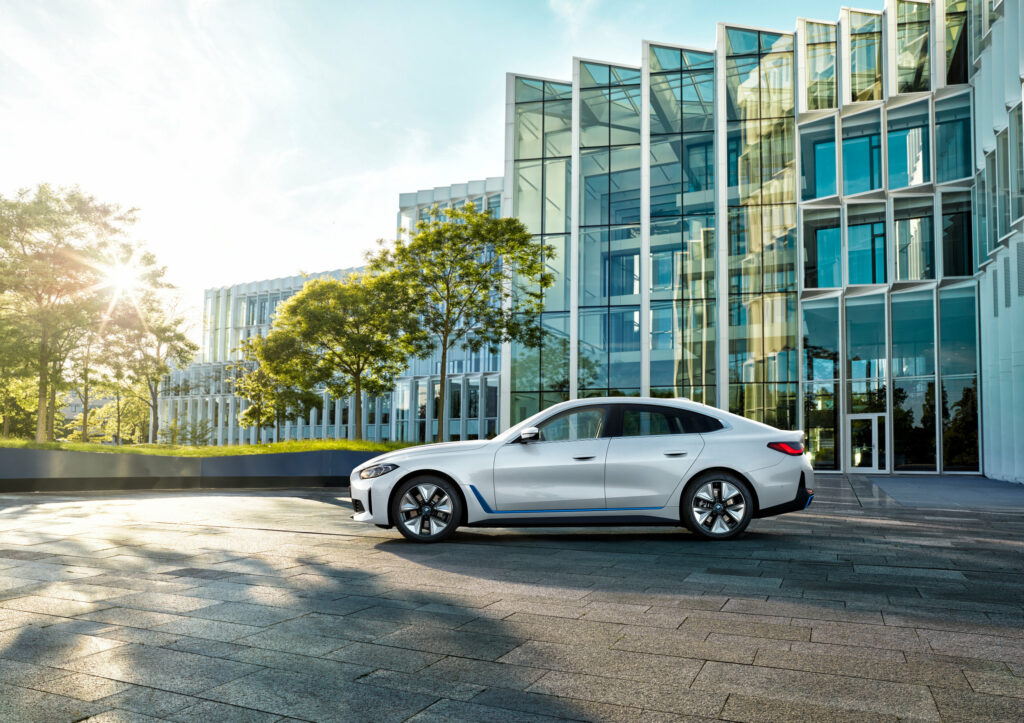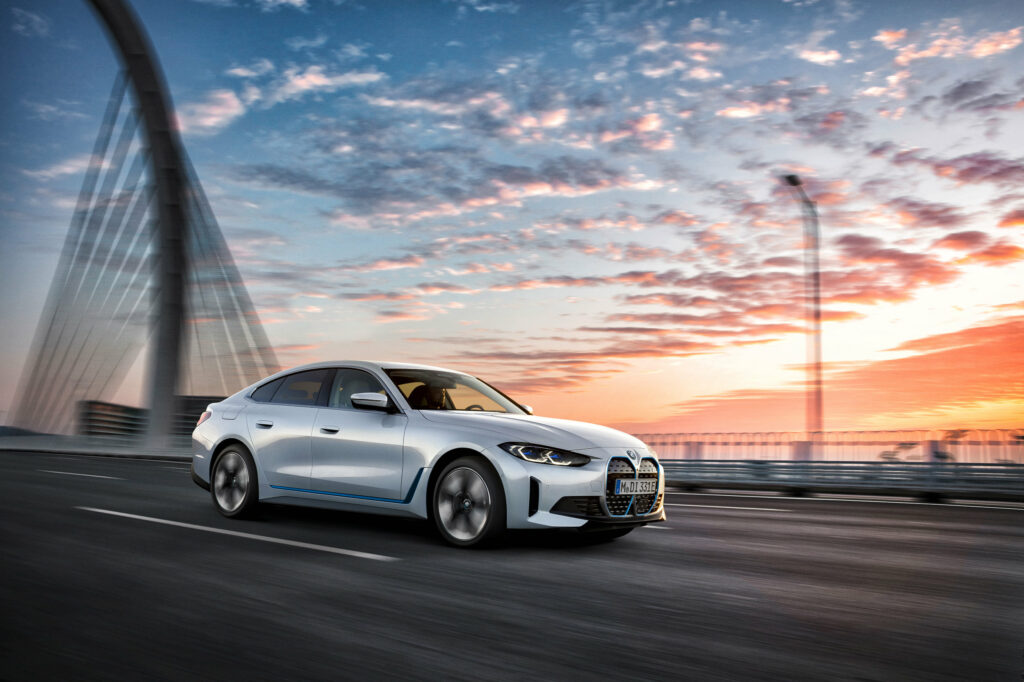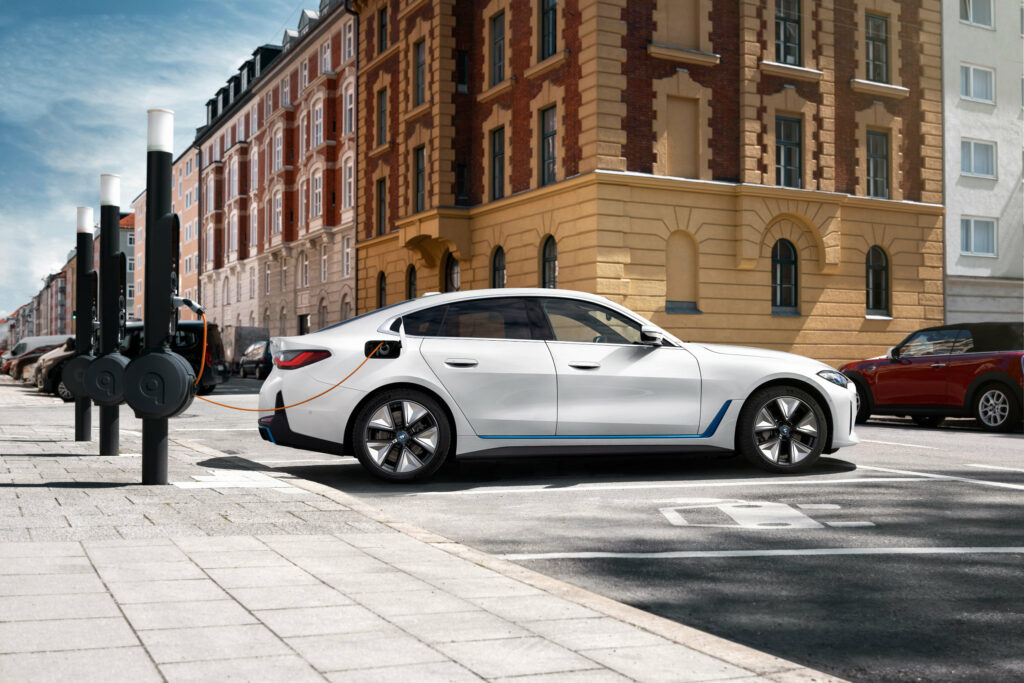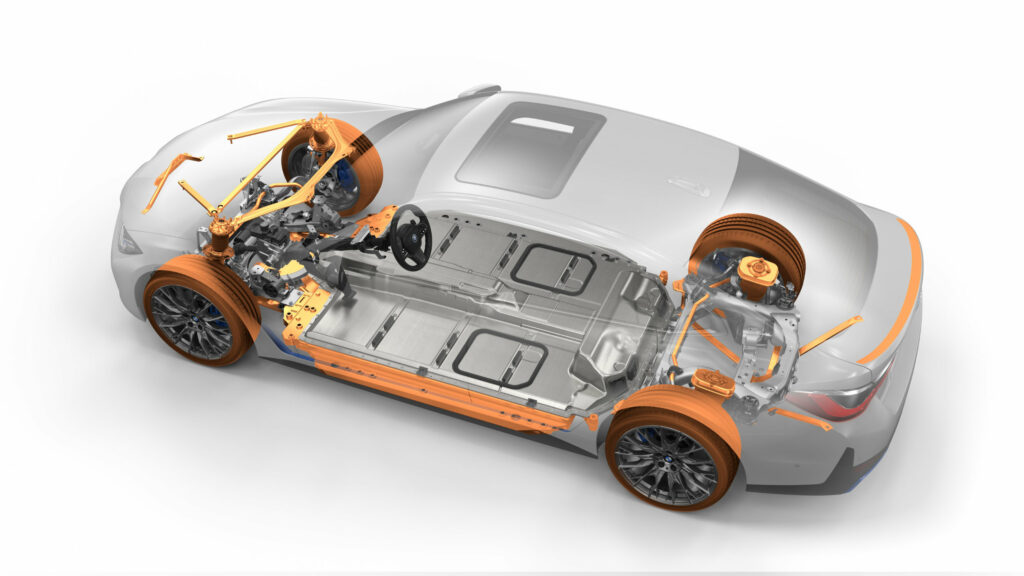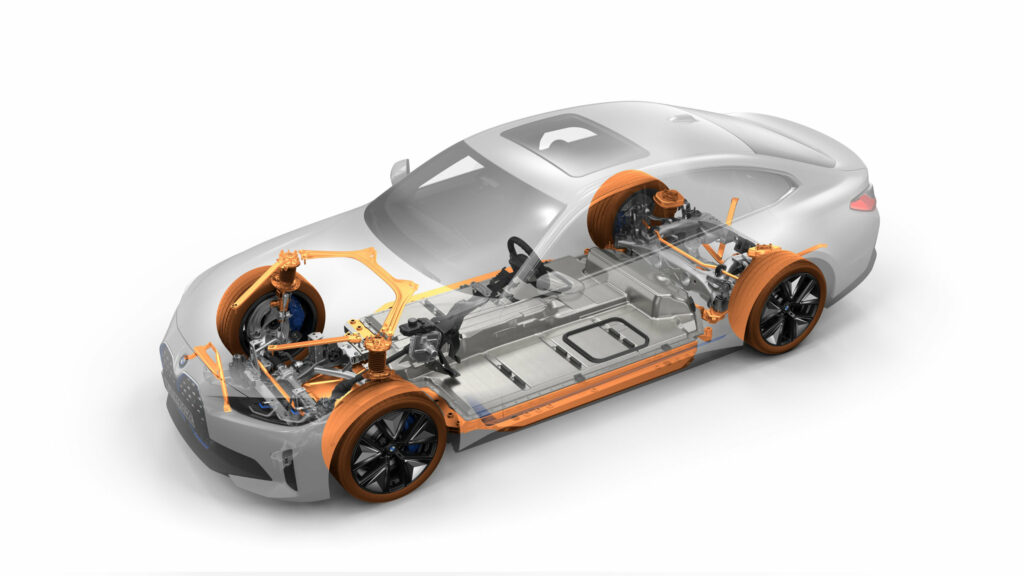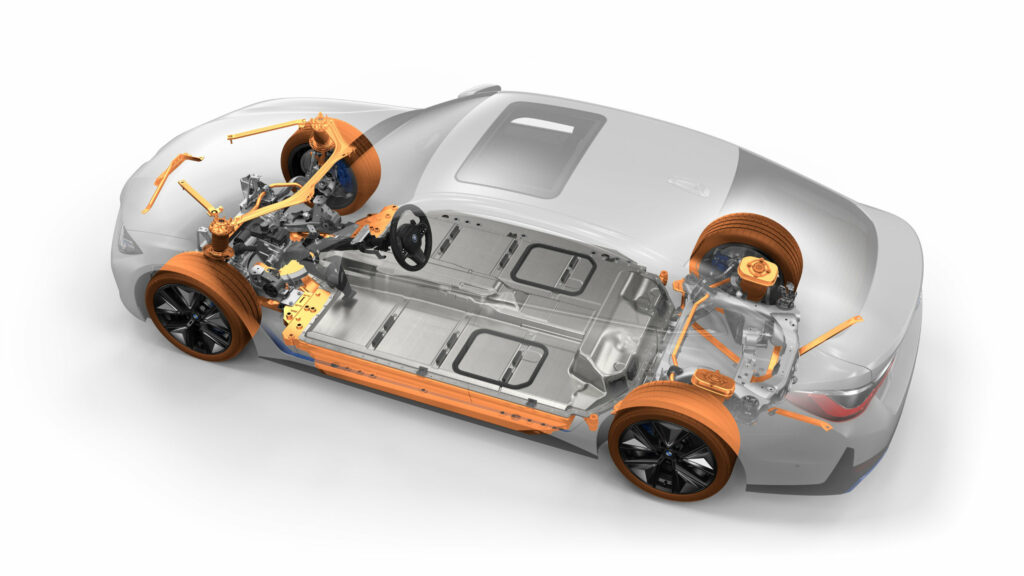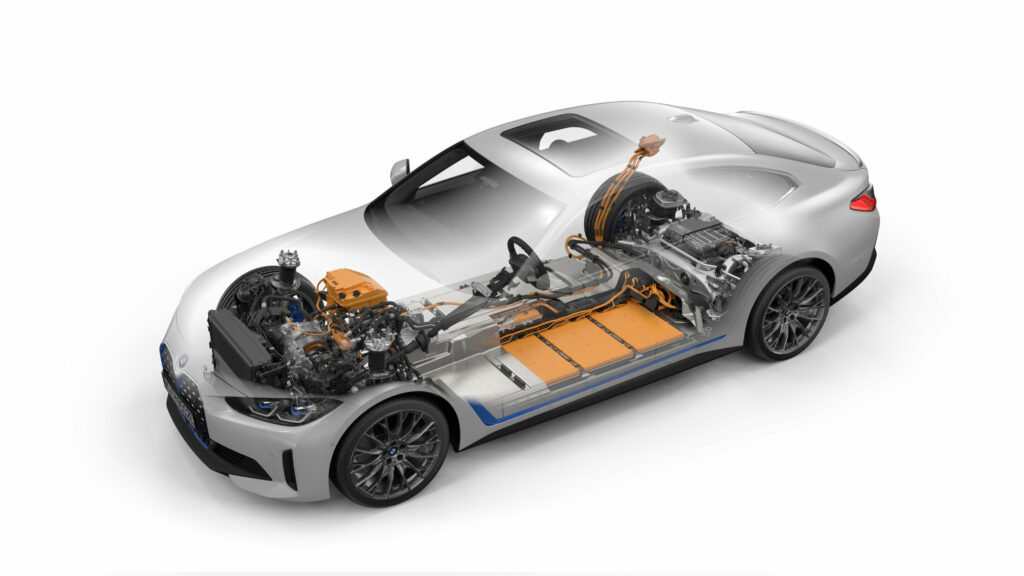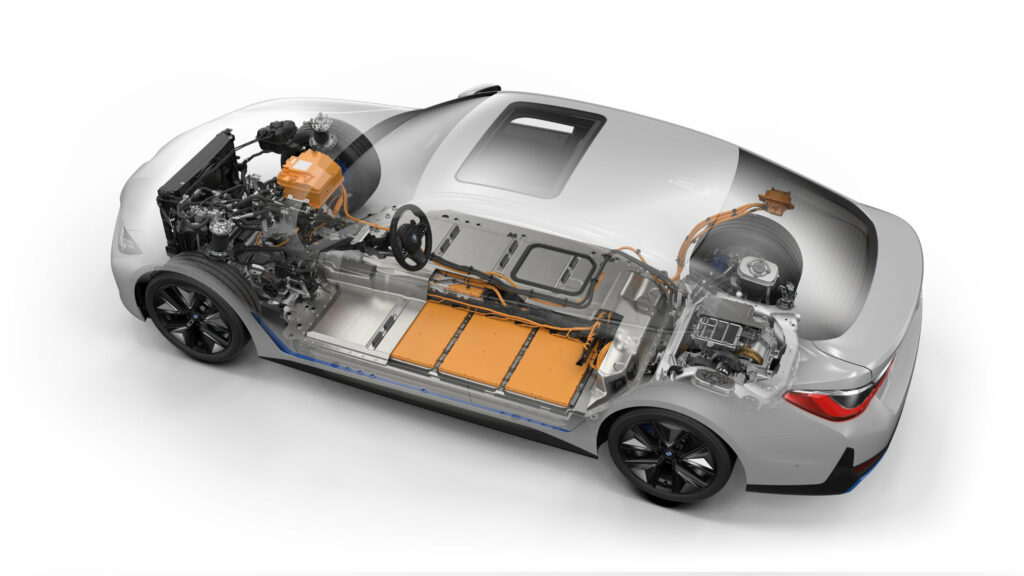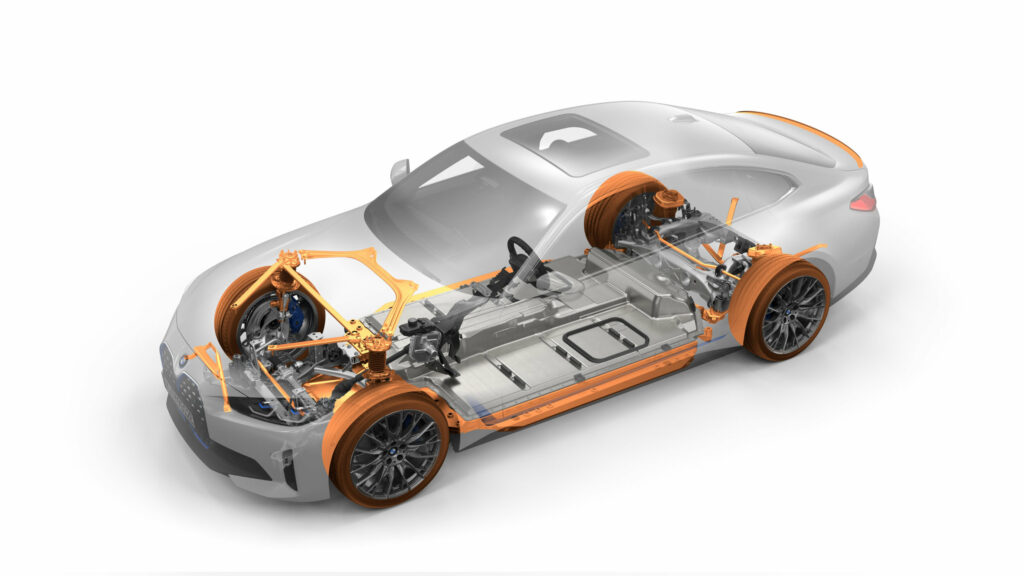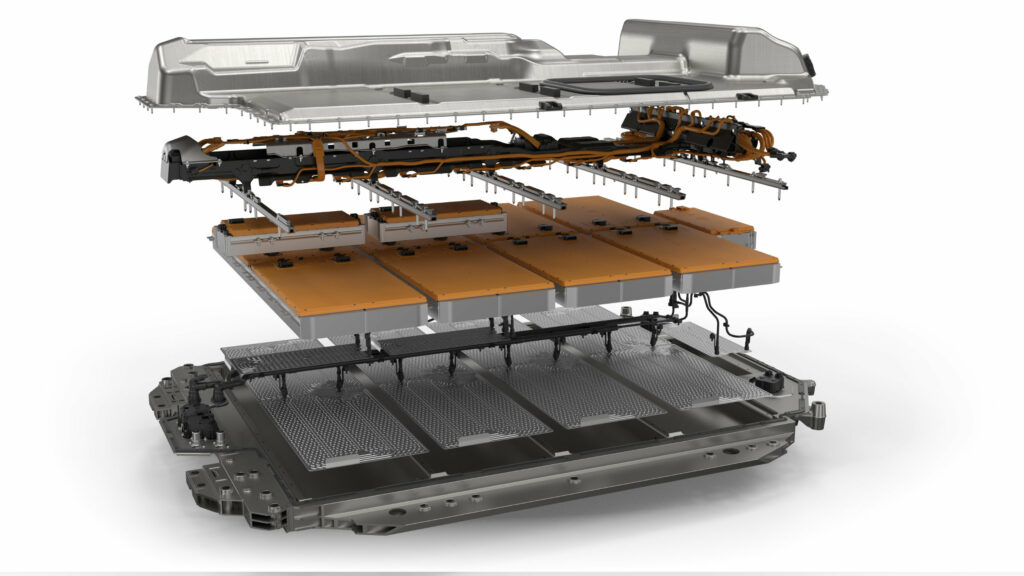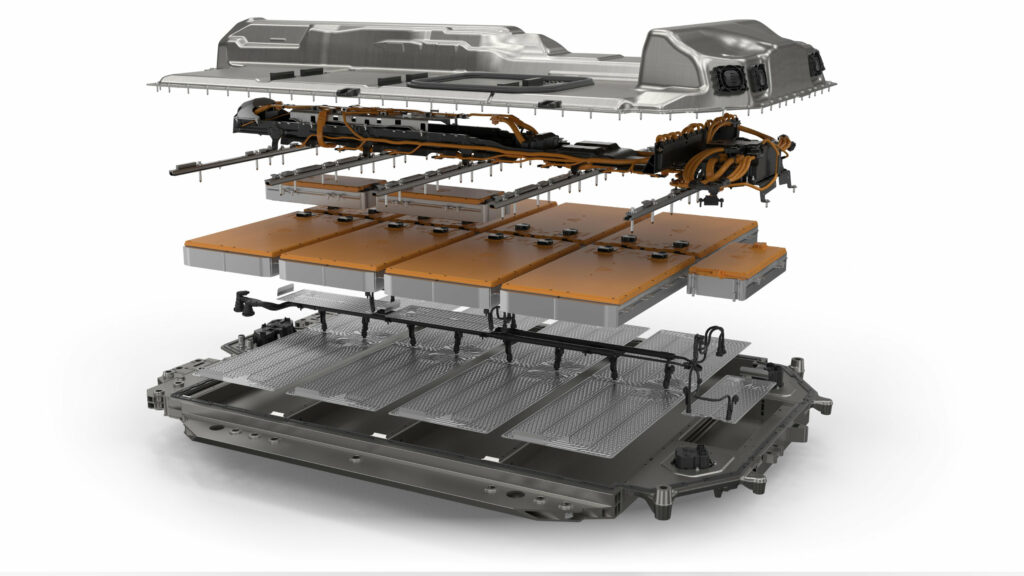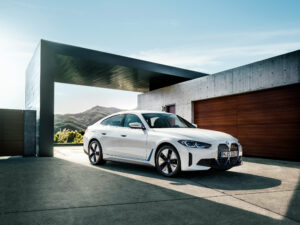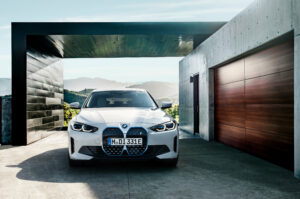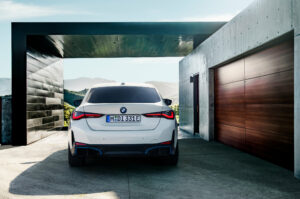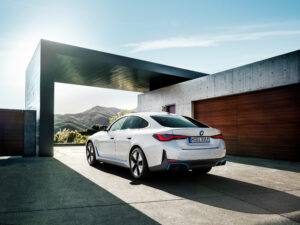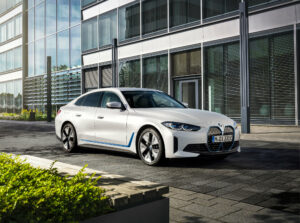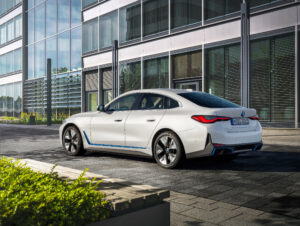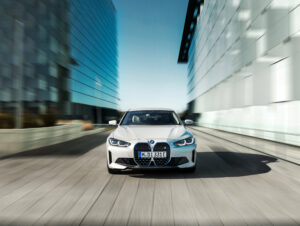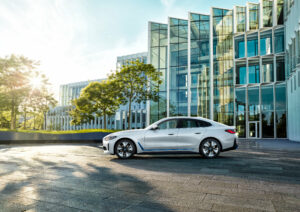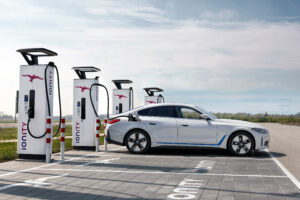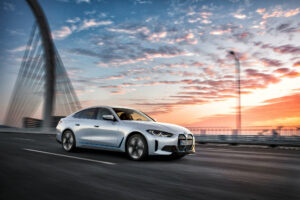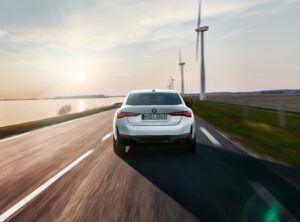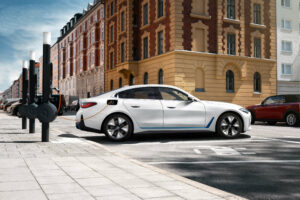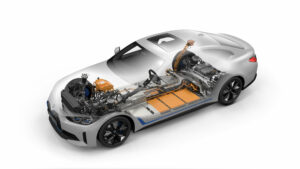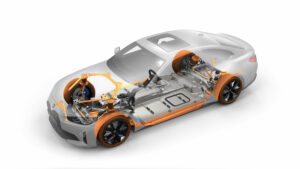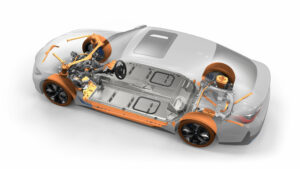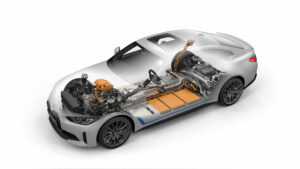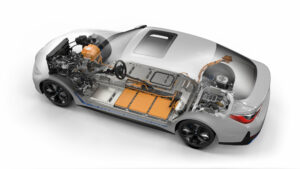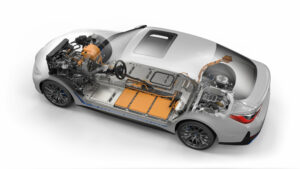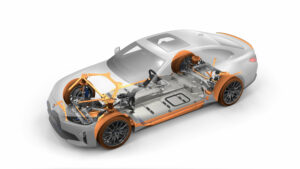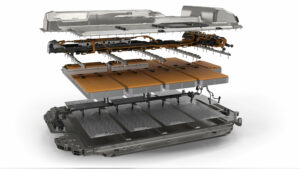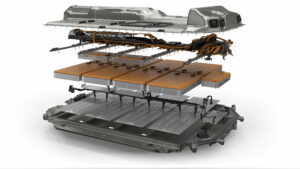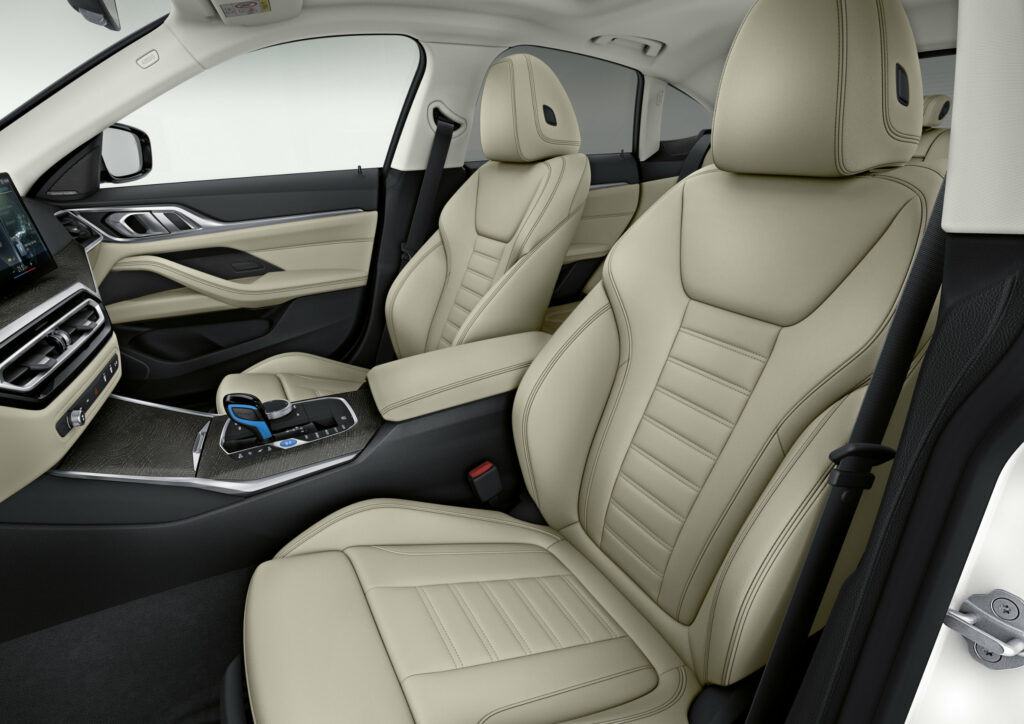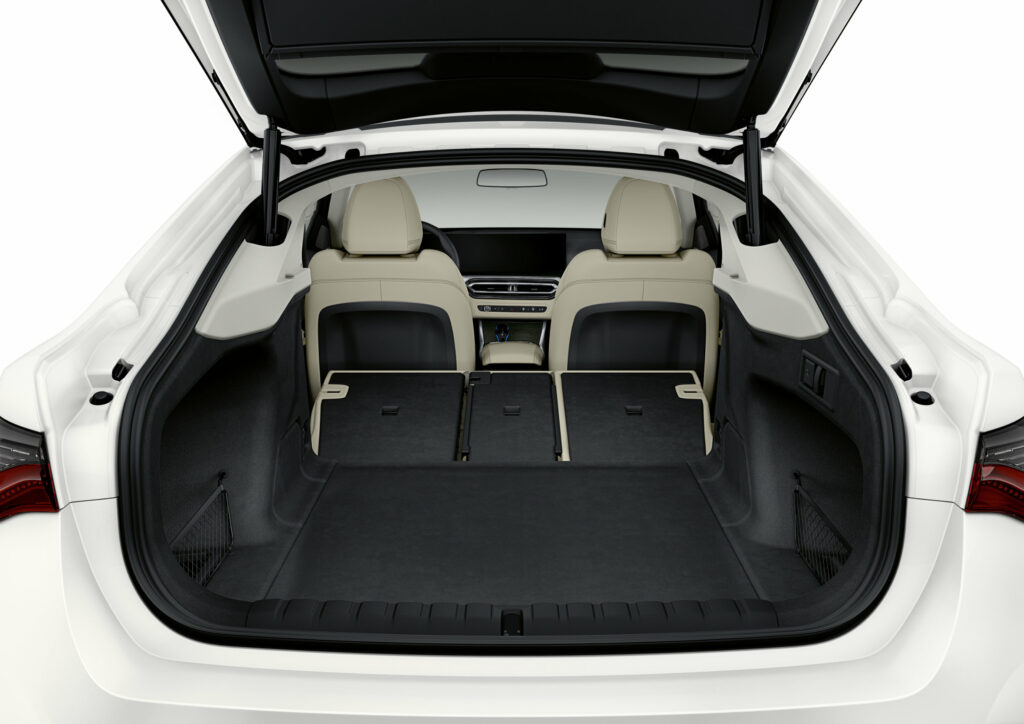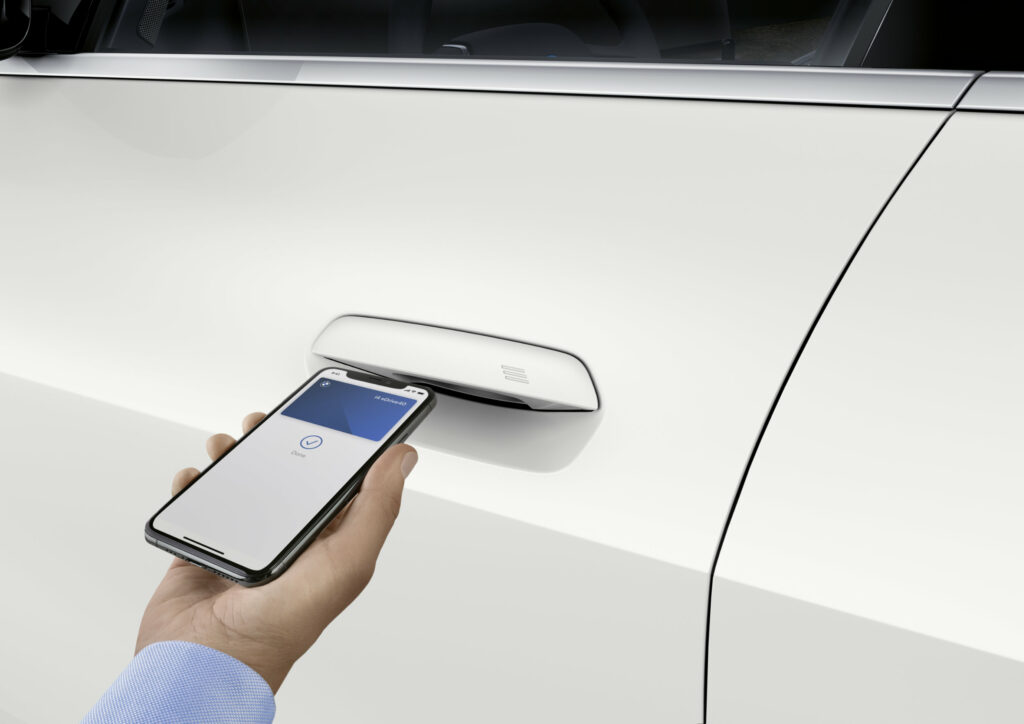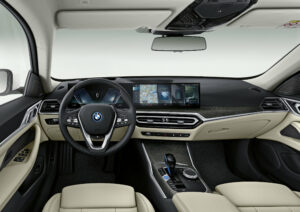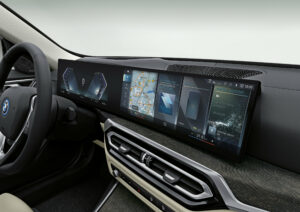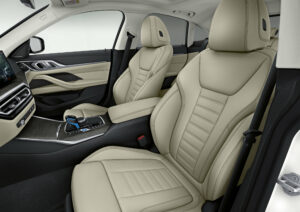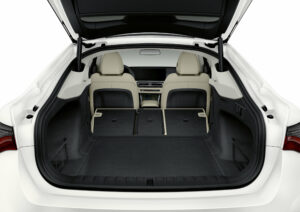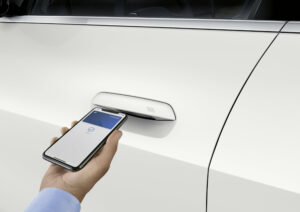BMW i4 eDrive40
Emission-free driving pleasure, premium quality, and customer-oriented individualization have for the first time become the traditional core of the midsize segment. The BMW i4 combines the legendary sporting prowess of BMW with the elegant design, roominess, and practicality of a four-door Gran Coupe.
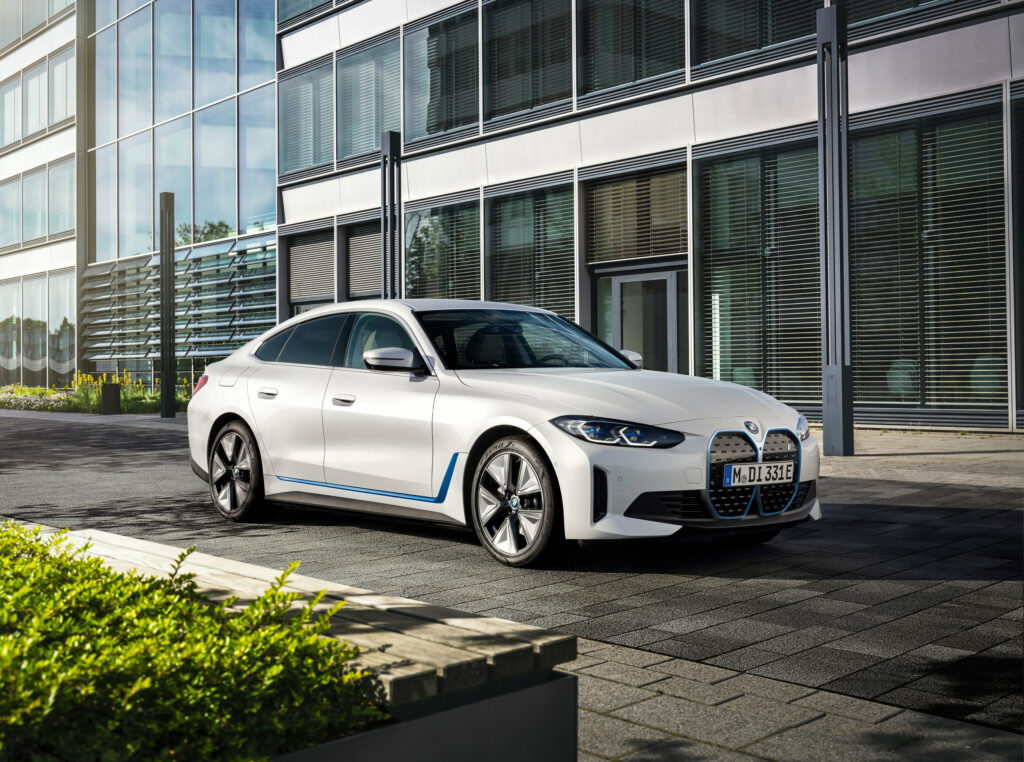
The BMW i4 is the new epitome of eco-friendly sportiness, comfort, and everyday use in the “premium mid-range segment”. The Gran Coupe car concept combines sedan-level driving comfort with modern functionality. An elegant, sporty design with elongated coupe proportions, a flowing roof line, four doors with frameless windows, and a large tailgate.
The i4 electric sports sedan features fifth-generation BMW eDrive technology with an integrated electric motor, power electronics, and transmission, as well as the latest battery cell technology.
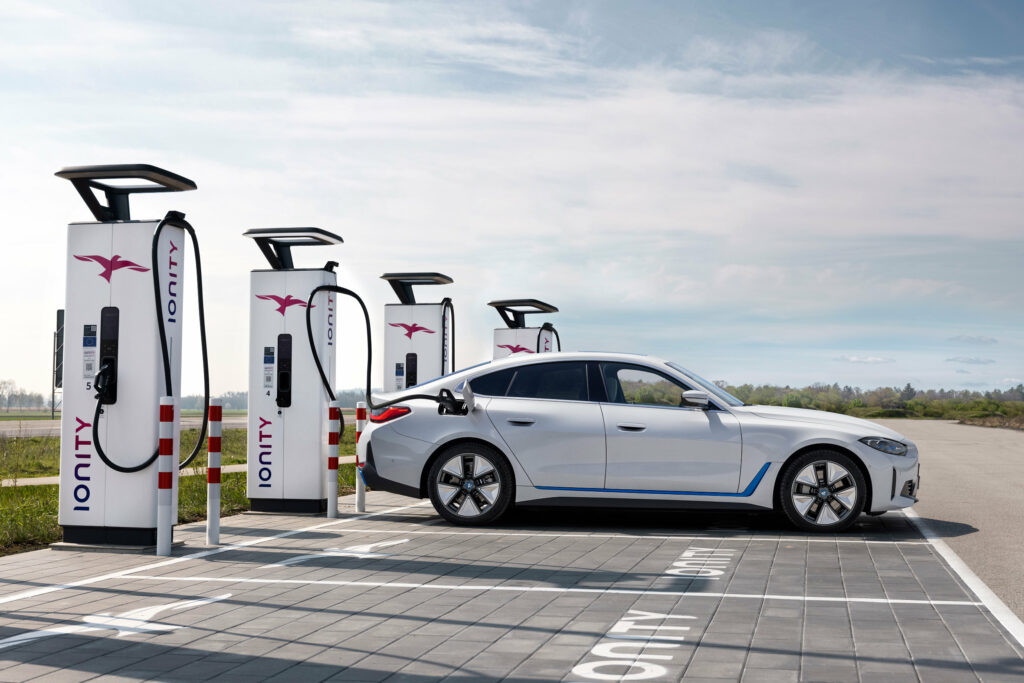
BMW will initially offer its i4 electric sedan in two variants: the i4 M50, the first all-electric car from BMW M, with 400 kW (544 hp), all-wheel drive, and a range of up to 510 km on the WLTP cycle, and the i4 eDrive40 with 250 kW (340 hp), classic rear-wheel drive and a range of up to 590 km on the WLTP cycle.
The BMW i4 M50 with Sport Boost technology for ultra-dynamic power transfer from two electric motors with maximum power and maximum system torque of 795 N⋅m gained acceleration from 0 to 100 km/h in 3.9 seconds. The BMW i4 eDrive40 with a maximum system torque of 430 N⋅m got 0-100 km/h acceleration in 5.7 seconds.
A slim, high-voltage battery with a capacity of 83.9 kW⋅h, specifically designed for the BMW i4 and located low in the vehicle floor with the vehicle center of gravity 53 millimeters lower than in the BMW 3 Series sedan.
The charging unit allows the use of DC fast charging stations with a capacity of up to 200 kW. According to BMW, such stations can extend the range to 164 km (BMW i4 eDrive40) and 140 km (BMW i4 M50) in 10 minutes.
Adaptive or individually adjustable brake energy recovery increases efficiency and allows you to feel the push of a single pedal plus the use of the coasting function depending on the need and the traffic situation.
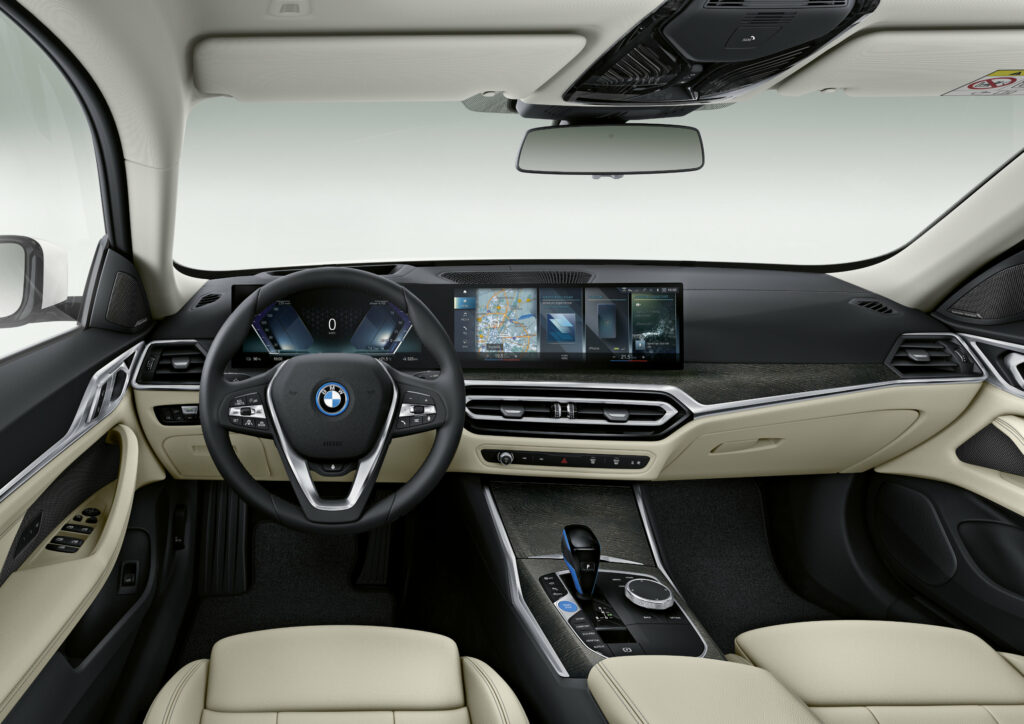
The BMW i4 eDrive40 features a long wheelbase with short overhangs and a lightweight but extremely rigid body structure. BMW also claims an ultra-low drag coefficient of 0.24 for the i4 eDrive40 and 0.25 for the i4 M50, only slightly more than the Mercedes-Benz EQS with its record low aerodynamics.
The BMW i4 M50 is also equipped with an adaptive M suspension, adjustable sport steering, the M Sport brake system, and optional M alloy wheels (up to 20 inches).
The BMW i4 gets the same curved display as the iX electric SUV: a 12.3-inch information display and a 14.9-inch control display are built into a frameless all-glass surface angled toward the driver. Naturally, it will run on iDrive, the software and infotainment platform that has served as the centerpiece of the automaker’s automotive operations for the past 20 years.
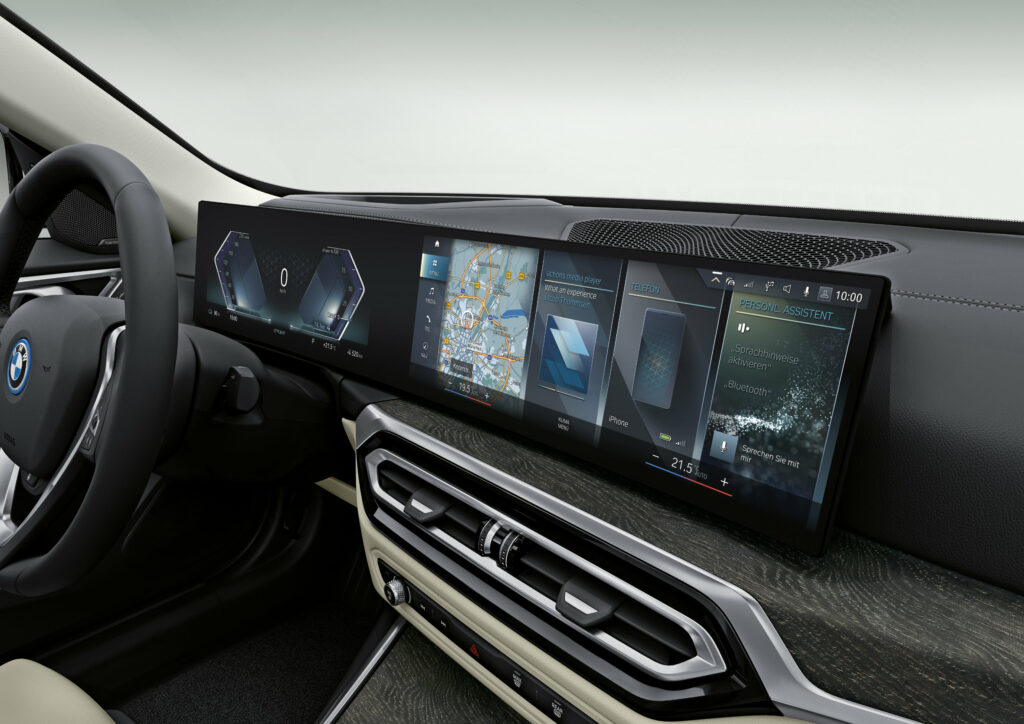
Driving pleasure and comfort are enhanced by options such as heated seats and ventilation, Vernasca leather trim and BMW Individual leather trim options, dashboard with Sensatec and leather options, M Pro sports package, ambient lighting, Harman Kardon Surround Sound system, and a large glass sunroof.
The model’s characteristic drive sound provides authentic feedback to accelerator pedal travel and speed. The optional BMW IconicSounds Electric allows you to integrate new sound options created through a collaboration with film music composer Hans Zimmer.
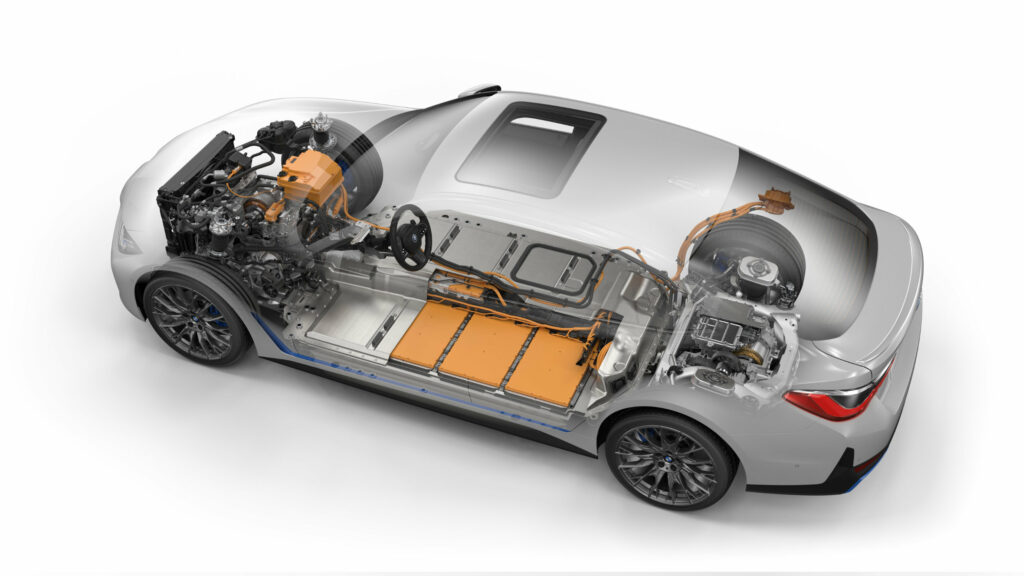
The large rear door is equipped as standard with an electric opening and closing mechanism. The cargo volume of 470 liters can be increased to 1,290 liters. An electrically extendable and retractable trailer hitch with a permissible load capacity of 1,600 kg is available as an option.
BMW is clearly focused on sustainability through the responsible use of resources throughout the entire value chain and the maximum reduction of CO2 emissions throughout the entire product life cycle. Vehicle production at the BMW Group’s Munich plant, including the battery cells, is made using 100 percent environmentally friendly energy.
| Performance | |
| Acceleration 0 – 100 km/h | 5.7 sec |
| Top Speed | 190 km/h |
| Electric Range | 475 km |
| Total Power | 250 kW (340 PS) |
| Total Torque | 430 Nm |
| Drive | Rear |
| Battery and Charging | |
| Battery Capacity | 83.9 kWh |
| Battery Useable | 80.7 kWh |
| Europe | |
| Charge Port | Type 2 |
| Port Location | Right Side – Rear |
| Charge Power | 11 kW AC |
| Charge Time (0->475 km) | 8h45m |
| Charge Speed | 55 km/h |
| Fastcharge Port | CCS |
| FC Port Location | Right Side – Rear |
| Fastcharge Power (max) | 200 kW DC |
| Fastcharge Time (48->380 km) | 30 min |
| Fastcharge Speed | 660 km/h |
| Energy Consumption EVDB Real Range | |
| Range * | 475 km |
| Vehicle Consumption * | 170 Wh/km |
| CO2 Emissions | 0 g/km |
| Vehicle Fuel Equivalent * | 1.9 l/100km |
| WLTP Ratings | |
| Range * | 590 km |
| Rated Consumption * | 160 Wh/km |
| Vehicle Consumption * | 137 Wh/km |
| CO2 Emissions | 0 g/km |
| Rated Fuel Equivalent * | 1.8 l/100km |
| Vehicle Fuel Equivalent * | 1.5 l/100km |
| Rated = official figures as published by manufacturer. Rated consumption and fuel equivalency figures include charging losses. | |
| Vehicle = calculated battery energy consumption used by the vehicle for propulsion and on-board systems. | |
| Real Energy Consumption Estimation between 119 – 234 Wh/km | |
| City – Cold Weather * | 177 Wh/km |
| Highway – Cold Weather * | 234 Wh/km |
| Combined – Cold Weather * | 202 Wh/km |
| City – Mild Weather * | 119 Wh/km |
| Highway – Mild Weather * | 179 Wh/km |
| Combined – Mild Weather * | 147 Wh/km |
|
Energy use for each trip will vary considerably depending on the driver and the conditions. Therefore, we have provided a range of estimates which can be useful in developing an understanding of the potential benefits of this technology. |
|
| Dimensions and Weight | |
| Length | 4783 mm |
| Width | 1852 mm |
| Width with mirrors | No Data |
| Height | 1448 mm |
| Wheelbase | 2856 mm |
| Weight Unladen (EU) | 2125 kg |
| Gross Vehicle Weight (GVWR) | 2605 kg |
| Max. Payload | 555 kg |
| Cargo Volume | 470 L |
| Cargo Volume Max | 1290 L |
| Cargo Volume Frunk | No Data |
| Roof Load | 75 kg |
| Tow Hitch Possible | Yes |
| Towing Weight Unbraked | 750 kg |
| Towing Weight Braked | 1600 kg |
| Vertical Load Max | 75 kg |
| Miscellaneous | |
| Seats | 5 people |
| Isofix | No Data |
| Turning Circle | 12.5 m |
| Platform | No Data |
| Car Body | Sedan |
| Segment | D – Large |
| Roof Rails | No |
| EV Dedicated Platform | Yes |
Home and Destination Charging (0 -> 100%)
A public charging station is required to use the highest possible charging rate. The EVSE/charging station’s charging capacity affects how long it takes to fully charge the battery. The table below shows all possible options for fully charging the BMW i4 eDrive40.
In Europe, plugging an electric car into an outlet is often as easy as plugging it into a household outlet, but there are differences from country to country. The table below shows the different ways to charge the BMW i4 eDrive40, but in some countries some chargers may not be available.
Type 2 (Mennekes – IEC 62196)

| Charging Point | Max. Power | Power | Time | Rate |
| Wall Plug (2.3 kW) | 230V / 1x10A | 2.3 kW | 41h30m | 11 km/h |
| 1-phase 16A (3.7 kW) | 230V / 1x16A | 3.7 kW | 25h45m | 18 km/h |
| 1-phase 32A (7.4 kW) | 230V / 1x32A | 7.4 kW | 13 hours | 37 km/h |
| 3-phase 16A (11 kW) | 400V / 3x16A | 11 kW | 8h45m | 54 km/h |
| 3-phase 32A (22 kW) | 400V / 3x16A | 11 kW | 8h45m | 54 km/h |
Fast Charging (10 -> 80%)
If you want to enjoy driving an electric car, one of the most important features to consider is the number of miles per hour the car can travel while charged. This is called the “range” of the car. All electric cars have a certain range, even if they are 100% charged. This is because they do not have an internal combustion engine to lean on if you need to drive a long distance.
Max. Power: The maximum power provided by the charging point
Avg. Power: The average power provided by the charging point during a session of 10% to 80%.
Time: the time it takes to charge from 10% to 80%
Speed: the average charging rate during the session of 10% to 80%
Combined Charging System (CCS Combo 2)
| Charging Point | Max. Power | Avg. Power | Time | Rate |
| CCS (50 kW DC) | 50 kW | 50 kW | 71 min | 280 km/h |
| CCS (100 kW DC) | 100 kW | 85 kW | 42 min | 470 km/h |
| CCS (150 kW DC) | 150 kW | 105 kW | 34 min | 580 km/h |
| CCS (175 kW DC) | 175 kW | 110 kW | 32 min | 620 km/h |
| CCS (350 kW DC) | 200 kW | 120 kW | 30 min | 660 km/h |
| Brand | BMW |
| Model | eDrive40 |
| Body Style | Sedan |
| Car Engine | Electric |
| Motor power | 250 |
| Maximum Torque, Nm | 430 |
| Battery Energy, kWh | 83.9 |
| Power reserve (NEDC/EPA/WLTP), km | - / - / 680 |
| Level Charging (230/400/DC), hours | - / - / 0.30 |
| Electrical Acceleration, 0-100 km/h (0-62.1 mph) in sec | 5.7 |
| Top Speed, km/h | 190 |
